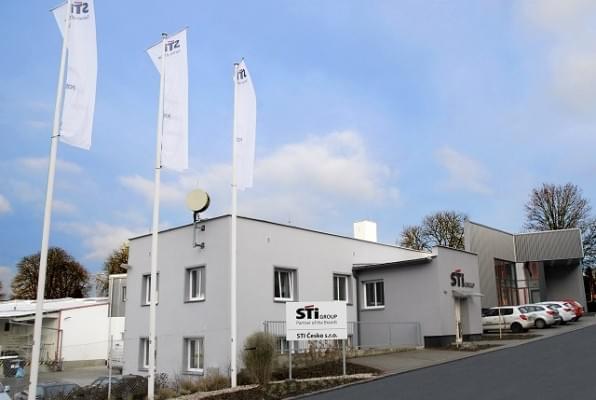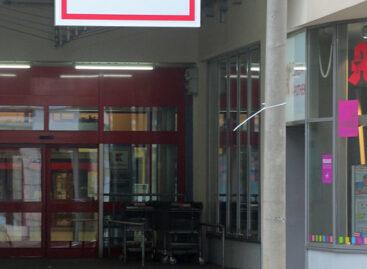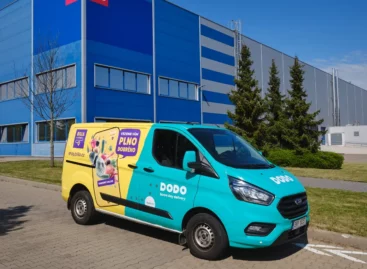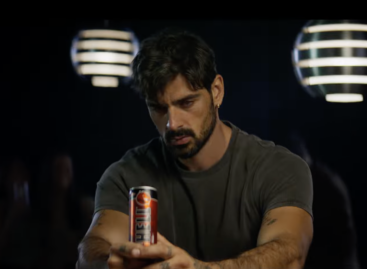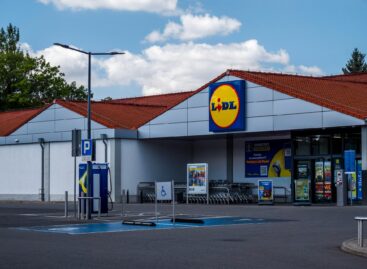STI Group strengthens its presence in CEE
With a population of over a 100 million and growing purchasing power, Central and Eastern Europe is an attractive market for manufacturers of branded products from all over Europe. The STI Group has, therefore, invested heavily in the expansion of its Czech production facility in Rumburk over the last few months. STI Česko has been manufacturing displays and packaging made of finished corrugated board in the Poland-Germany-Czech Republic triangle for the last 20 years.
At the invitation of the STI Group and CHEP CZ, customers from nine countries visited the plant at the end of November for a one-day workshop on POS trends and gained a deeper understanding of the capabilities of the production facility.
“We know the CEE market well”, says STI Group Managing Director Michael Apel. “With our plant located in Rumburk and our design office in Prague, we are ideally placed to serve our customers in the region, which is why we decided to expand the production facility, investing heavily in the plant in 2016. We have added about 2000 square metres of production space, establishing a basis for expansion of the STI Group’s business in Eastern Europe. “We want to grow with our customers in their target markets”, says Apel.
The addition of production space was necessary to install an additional offset printing press and an extra gluing machine. “We also streamlined production flow and improved the efficiency of the production process for packaging and displays through rigorous implementation of lean management”, says Christian Wagner, Plant Manager of the Rumburk facility, pleased with the development. With about 110 employees, the Rumburk plant produces displays for reputed manufacturers of branded goods across Europe, many of whom attended the workshop.
Insight into the retail landscape in CEE
Zdenek Skála, Research Director, Retail & Shopper at GfK Czech provided the workshop participants an overview of the evolution of the Czech retail landscape, changes in consumer behaviour, and their impact on displays. “As the expansion of retail floorspace is very limited, the focus today is on efficient utilisation of space and increase in floorspace productivity.”, says Skála. “In-store communication is the most important touchpoint in the communication chain between the customer and manufacturer. As the purchasing behaviour of consumers is changing, companies need to network more closely.”
In his talk, Gerd Heyny, Marketing Director of Henkel Beauty Care CEE, also underscored the importance of POS communication. “In my 15-plus years of experience of managing the brand presence of Henkel Beauty Care in 19 countries, displays have proven to be the most effective communication tool for us.” The marketing expert also believes that there is huge potential to be tapped not just in hypermarkets but also in small-format stores and is working with his team to enhance the stopping power of displays. “Our experience shows that a successful display always provides a trigger for product purchase. It’s not so much about merchandising large product quantities with logistic efficiency but more about creating buying motives and developing theme-based concepts.” For the Beauty Care segment for instance, seasonal themes could be an evening party or city-themed displays such as ‘New York’, ‘Rio’ or ‘Tokyo’.
Logistic factors matter when you consider placement of displays in retail. In CEE, many displays are delivered flat-packed to retail stores, assembled by a merchandising team and stocked with the product only after it reaches the store. “The STI Group’s Shelf-Click Display that we are using has a very efficient design. The shelf display can be set up within 20 seconds, allows for brand-specific customisation and provides us a high level of flexibility”, says Heyny.
However, in the CEE too, the demand for pre-assembled solutions that can be delivered to retail stores in the form of pallet displays has been increasing, according to Jan Kocárek, Chep-Country General Manager for Czech Republic and Slovakia. He and his team are responsible for the launch of the new chep quarter pallet and are optimising the supply chain for retailers and manufacturers. “The pallet offers several advantages especially for high-end displays. With stability and efficiency in mind, designs such as the STI Group’s new display base can reduce set-up time by as much as 50 percent.”
From pallet displays to floor-standing displays, in the showroom and in presentations of European trends by the STI Group’s team, the workshop participants got an overview of the current trends in European retail. Practical examples showed how online and offline communication can be integrated and the role played by displays in the entire customer journey.
To complement their theoretical knowledge, workshop participants were given a tour of the production process where they could follow the display through all stages of development, right from the idea to the finished product. “I did not expect display production to be such a complex process and the level of expertise involved in production”, said one of the participants. This exchange of information and an understanding of the market, customer and production was what made the workshop so valuable for the participants. “This exchange was also important for our plant”, says Wagner, as we can now tailor our products and services more effectively to meet customer requirements.
Related news
Kaufland Rolls Out ‘XS’ Format In Czechia
🎧 Hallgasd a cikket: Lejátszás Szünet Folytatás Leállítás Nyelv: Auto…
Read more >Billa Czechia Focuses On Quick Commerce
🎧 Hallgasd a cikket: Lejátszás Szünet Folytatás Leállítás Nyelv: Auto…
Read more >Consider these things before buying an electric car
🎧 Hallgasd a cikket: Lejátszás Szünet Folytatás Leállítás Nyelv: Auto…
Read more >Related news
HELL ENERGY 20 years – an anniversary film was made about the history of the brand
🎧 Hallgasd a cikket: Lejátszás Szünet Folytatás Leállítás Nyelv: Auto…
Read more >Ads Interactive Media Group will sell the retail media platforms of Auchan Hungary Kft. stores from 2026
🎧 Hallgasd a cikket: Lejátszás Szünet Folytatás Leállítás Nyelv: Auto…
Read more >Lock on the bag: a Hungarian shop photo goes viral, while plastic bags are already being phased out in several markets
🎧 Hallgasd a cikket: Lejátszás Szünet Folytatás Leállítás Nyelv: Auto…
Read more >

